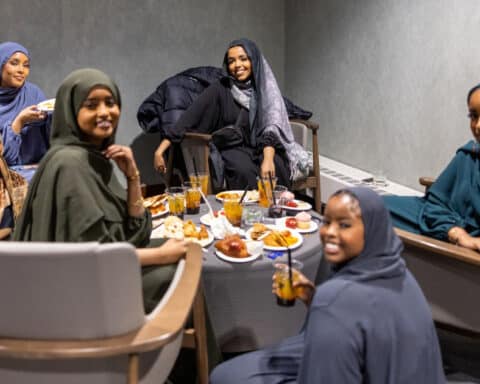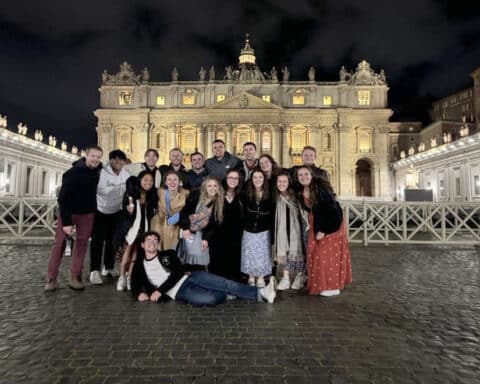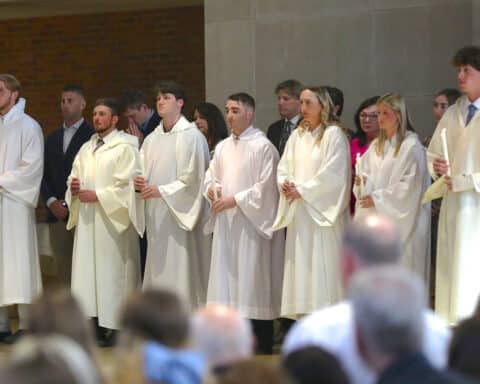Julie Cleer will be a senior this fall at LaRoche University in suburban Pittsburgh, and she’ll start the semester again living with seniors.
But those seniors aren’t her classmates. Instead of living in a dormitory or sharing an off campus apartment with other students, Cleer has been living with senior citizens — the 55-plus men and women at Terrace Place Vincentian.
“I thought it would be a very unique opportunity,” she said about applying to Students In Residence, a partnership between the university and Vincentian Collaborative System.
It’s been a winning situation for her and the other students who participated in the program since it was launched for the 2019-20 school year. It started with six students sharing three apartments in the senior living community, and now there are four students in two apartments.
“The initial idea came from our late former president, Sister Candace Introcaso,” said Ashley Testa, director of housing and residence life at the university that the Sisters of Divine Providence founded in 1963.
Charism of compassion
According to several studies, people over 65 are the most lonely of all ages. Studies also show that socializing lessens stress and improves their physical and mental health and well being. It may also improve cognition.
Research from the Center for Healthy Aging at Penn State University found that adults between the ages of 70 and 90 had better cognitive performances on the day of and two days after having frequent and pleasant social interactions.
The Vincentians have been at the forefront of care for the elderly for generations. Founded in Pittsburgh in 1902, the Vincentian Sisters of Charity merged with the Sisters of Charity of Nazareth in 2008 but kept the Vincentian name for their nursing and personal care homes, child care centers and independent living.
Read more Fall Catholic college articles here.
“In the healthcare work of the Vincentians, since its founding the sisters have acted boldly to meet unmet needs, whether it was a home for the incurable in the 1920s, a child care center in the 1970s, or independent living in the 2000s,” said Jude Hazard, executive director of communications and public relations for the Vincentians. “They have been addressing critical issues like isolation, and everything we do is part of that ethos of meeting an unmet need and doing so compassionately in a way that welcomes everyone.”
The Sisters of Divine Providence have a charism of compassion, justice and peace. Their 2022 directional statement calls for expanding intergenerational and intercultural opportunities through education, dialog and lived experiences.
That’s a perfect fit for the Students In Residence program.
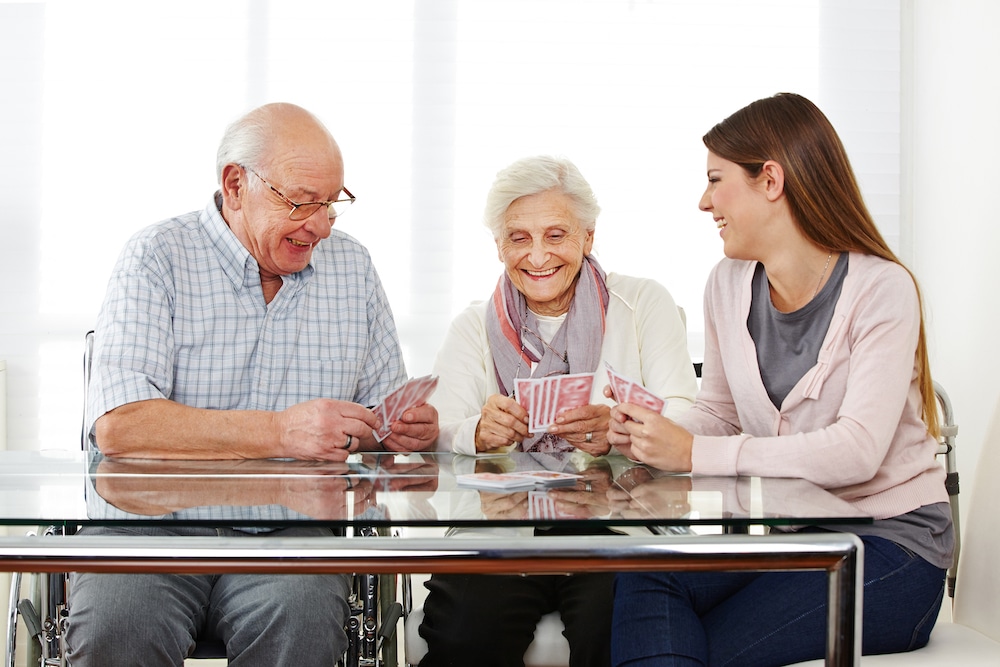
Intergenerational connection
For students, it helps in debt relief by providing free living space. The apartments have one bedroom and a studio room, and a bath and a half. Students can switch the different size rooms halfway through their stay, or both occupy the bigger bedroom and use the studio for studying. There’s also a living room, full kitchen that saves on meal expenses, and either a patio or balcony.
Students commit to six hours a week of volunteering in a variety of activities, often sharing their own talents. One student from Zambia taught Zumba classes. Another prepared and shared a rice dish from his native Dominican Republic.
“They will give yoga classes, or paint with the residents and help them with chores,” Testa said. “Obviously, our GenZ students are very good with technology and the 55-plus generation is not so good. So students help them to learn how to use social media, how to use computers, and those kinds of things.”
Cleer, an IT major from Youngstown, Ohio, shares her knowledge of electronics, and that’s a plus for her, too.
“Learning how to help a variety of age ranges and skill sets in technology will allow me to be more well rounded when I am in the field,” she said.
She likes to bake cookies and share recipes and stories with residents, and she’s taking crocheting and knitting classes with one of the women.
There are many opportunities besides planned activities for the generations to connect. They meet up in the mailroom or lobby, in the halls or outside. Students are ready to lend a hand with taking out the trash, or helping out in many other situations.
“I’m enjoying the relationships that I’m making with other residents,” Cleer said. “I’m able to talk to them about anything. I think it will be a good lifelong relationship that I can form with them, and with the lessons that they’ve taught me about growing up and how to interact with people. A lot of the residents are away from their families, just like the students are. I’m very close to my grandparents, and so when I’m away from home, I think of the people here as my adopted grandparents.”
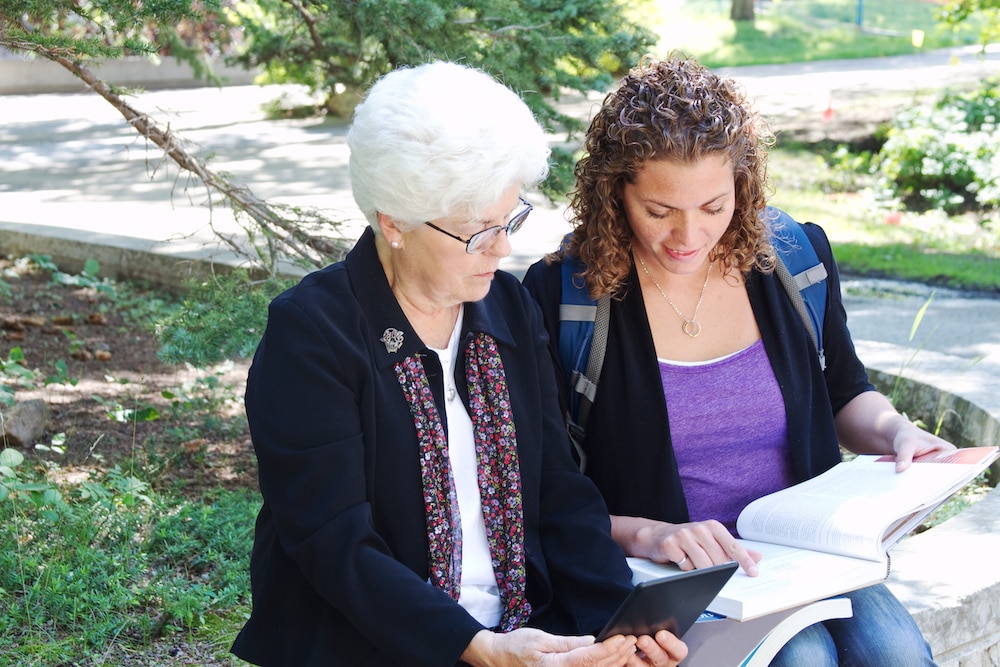
Quality of life
Mary Ann Sperl and her husband Bob moved to Terrace Place last December. Cleer helped them with setting up their computer.
“It’s good just knowing that there’s someone of that age to help us,” Sperl said. “We learn new skills and we teach students new skills and we might not even be aware that we are doing it.”
Having the students in the building, she added, decreases the feeling of social isolation and improves the quality of life.
“We have fun with the student events like bingo and crafts,” she said. “That takes our minds off our other problems, like aches and pains and aging. I’m very glad we came here.”
The students also participate in spiritual programs with the residents, including praying the Rosary and non-denominational Bible studies.
Many good things have come from the intergenerational program.
“Oftentimes seniors feel like they’re becoming a burden, and we wanted to change that narrative and let them see that they are resources,” said Kenna Embree, Vincentian’s life enrichment coordinator. “It goes both ways in a mutually beneficial relationship. By providing our students with one responsible, relatable relationship with an older adult, it increases the prevalence of many protective factors for oftentimes risky behavior, underage drinking and irresponsible driving. When the students have a reliable relationship with an older adult and someone to talk to, it provides for that resident a sense of purpose and meaning.”
Testa noted that the program invests in lifelong learning and contributes to the positive development of people.
“We are bringing together young students who are just beginning their journey of learning, and the older population that’s still learning every day,” she said. “We are bringing those two populations together and allowing them to learn from one another. This is giving back to the community, which is part of the ministries of the Sister of Divine Providence, and a hallmark of the Catholic faith.”



